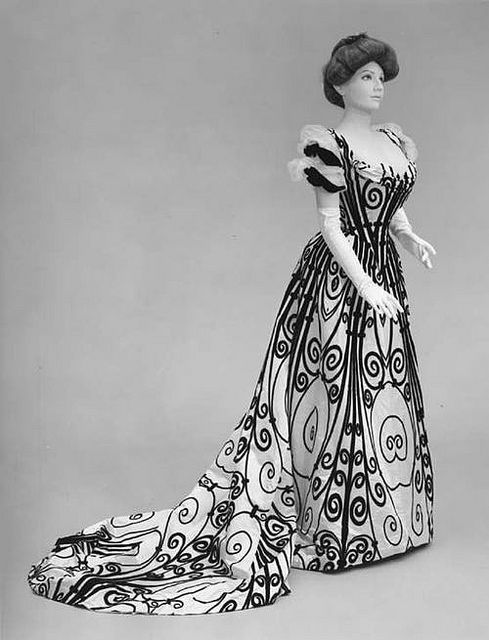Just as I finish one costume, an opportunity appears for another one…
So there’s a big Harry Potter event coming up over Memorial Day weekend (yay, Misti-Con!), and I’ve made plans to attend! Of course, I need a fabulous costume to wear and some basic Hogwarts robes just won’t cut it, not least because I’m way too old to be playing a high school student, no matter what sitcom casting directors would like you to believe. I racked my brain for an in-canon idea, and came up with the idea of being Helena Ravenclaw, a.k.a., The Grey Lady (House Ravenclaw’s ghost).
The book is short on descriptions, noting only that she wears gray and has long hair and a long cloak. The movies show her in two different outfits– the first is kind of Renaissance German in style (forgive me, fashion historians, this is my closest approximation of the era), with massively puffed sleeves and a full skirt, while the second (in a much longer scene) is rather medieval. I decided to split the difference– I don’t have the time or the resources to sew a Renaissance gown and all its underpinnings, but I’m making something a bit more complicated than a basic medieval-style outfit.


As is my wont, I first tried to find an appropriate dress somewhere else to modify with extra fabric and trims. There were a few possibilities, but most were pretty expensive and none were just what I wanted. I finally decided that I would have to make one myself, which required a bit more creativity. Here are a few of my ideas, which incorporate the various elements that caught my eye:

I definitely want to princess-seam the dress to keep the lines sweeping, and I like the idea of having extra gores in some flowy fabric to add to the ghostliness of the look and provide more movement to the skirt. I’ve also become attached to the “Merida” style sleeve puffs, since they kind of suggest the puffed-sleeve look from the first movie scene, but keep the slimmer lines of the second. No historical accuracy here, that’s for sure.
To start, I found a Simplicity 9891 sewing pattern in the $1 bin at my local fabric store, and snapped it up to use as a base for my dress. It’s got the basic shape, and if the online reviews are any indication it can be easily modified.
Up next: fabrics!
















